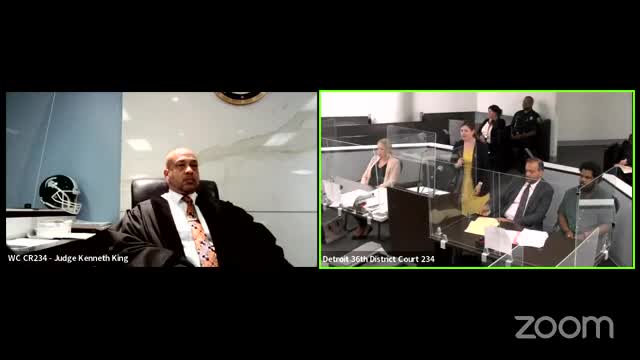Court hears shocking details in child exploitation case
August 02, 2024 | CTRM 234 36th District Court, District Court Judges, Judicial, Texas

This article was created by AI summarizing key points discussed. AI makes mistakes, so for full details and context, please refer to the video of the full meeting. Please report any errors so we can fix them. Report an error »

In a recent court hearing, critical discussions emerged surrounding the case involving a 12-year-old girl, Mia Casey, and allegations of sexual misconduct. The proceedings highlighted the complexities of the case, particularly focusing on the girl's age and the nature of the evidence presented.
During the hearing, it was revealed that Mia had previously run away from home and had been found at the residence of an individual named Mr. Perez. The prosecution questioned Mia's mother about her daughter's whereabouts during a specific timeframe in July 2023, as well as her online behavior, including claims that Mia misrepresented her age on dating apps.
Defense attorneys challenged the relevance of Mia's running away and her online activities, arguing that these factors should not influence the case's outcome. They contended that the evidence presented, including videos and images, did not conclusively demonstrate sexual penetration, suggesting that the actions depicted could be misinterpreted as mere performances rather than actual intercourse.
However, the prosecution countered these claims, emphasizing that the law does not consider the apparent age of the victim as a defense in statutory rape cases. They argued that the evidence, including audio and visual materials, clearly indicated sexual acts involving Mia, reinforcing the seriousness of the charges against the defendant.
The judge underscored the importance of evaluating the evidence in its entirety, stating that regardless of any claims made by the defendant regarding Mia's age, the law categorically protects minors from such exploitation. The court's focus remains on the gravity of the allegations and the implications for the young victim involved.
As the case progresses, it continues to draw attention to the legal definitions surrounding statutory offenses and the protection of minors in the digital age.
During the hearing, it was revealed that Mia had previously run away from home and had been found at the residence of an individual named Mr. Perez. The prosecution questioned Mia's mother about her daughter's whereabouts during a specific timeframe in July 2023, as well as her online behavior, including claims that Mia misrepresented her age on dating apps.
Defense attorneys challenged the relevance of Mia's running away and her online activities, arguing that these factors should not influence the case's outcome. They contended that the evidence presented, including videos and images, did not conclusively demonstrate sexual penetration, suggesting that the actions depicted could be misinterpreted as mere performances rather than actual intercourse.
However, the prosecution countered these claims, emphasizing that the law does not consider the apparent age of the victim as a defense in statutory rape cases. They argued that the evidence, including audio and visual materials, clearly indicated sexual acts involving Mia, reinforcing the seriousness of the charges against the defendant.
The judge underscored the importance of evaluating the evidence in its entirety, stating that regardless of any claims made by the defendant regarding Mia's age, the law categorically protects minors from such exploitation. The court's focus remains on the gravity of the allegations and the implications for the young victim involved.
As the case progresses, it continues to draw attention to the legal definitions surrounding statutory offenses and the protection of minors in the digital age.
View full meeting
This article is based on a recent meeting—watch the full video and explore the complete transcript for deeper insights into the discussion.
View full meeting
